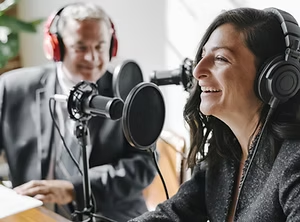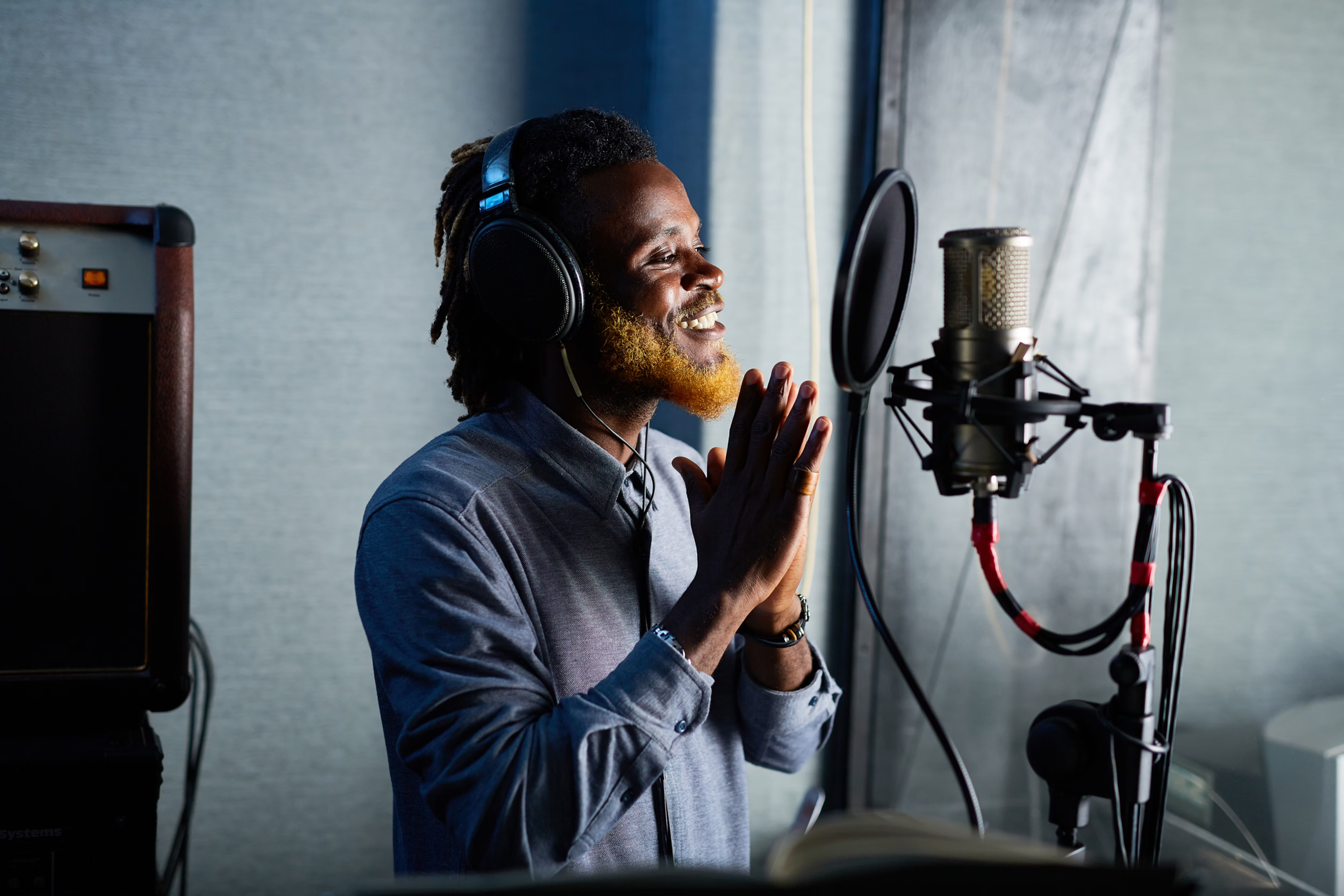Podcasts
Record an audio production which includes both spoken content and sound effects.
Description
Students may enter one project per subcategory but can submit additional projects as part of a group. However, group members must differ for each project. This category includes any sort of audio production which includes both spoken content and sound effects. Entrants are encouraged to create a unique thumbnail graphic that will be used to advertise the podcast and a musical introduction that helps draw the listener in. Programs may be any length but only the first ten minutes will be judged. *Projects that use Garageband must have the Metronome sound turned off to be judged.
Students create their podcasts using audio recording software and combine it with sound effects. Sound effects can be created for this project or from other resources as long as they are credited and with appropriate copyright licensing.
Recommended Tools: Anchor, Audacity, GarageBand

Interview/Conversational
A podcast, “having one host, with either a single guest interviewee or multiple guests throughout the course of the show. This podcast format provides listeners with different viewpoints and is usually a popular format with political podcasts” (Voices.com).

Nonfiction Narratives
“These podcasts retell the true stories of others through the use of audio clips from the interviewee, as well as layer on their own editorializing of the stories at hand” (Voices.com).

Scripted Fiction
“Fiction podcasts are a form of audio drama that tells stories using a script, a cast of voice actors, and sound design to immerse the listener in the narrative” (Voices.com).
Procedures
All entries, from conception to final product, must be written, directed, and produced by the students entering the production. However, there is no age limit on the actors or performers who appear in the production. Each entry must have a title graphic and include acknowledgement of any copyrighted material. Copyrighted material can be submitted on the entry form instead of being part of the recorded entry.
Helpful Hints
Projects that use Garageband must have the Metronome sound turned off to be judged.
Entries must be submitted digitally on the school entry form. Links can be generated from students’ Office 365 accounts and other web platforms.
Judging Criteria
Creativity/Originality
Creativity and Originality: The project highlights the uniqueness of the concept and reflects the student's perspective in developing the podcast theme and content.
Subject Matter: The chosen topic is presented effectively through engaging and innovative audio storytelling that captivates the audience's attention.
Organization/Structure
Episode Structure: The organization of the podcast episode is coherent, featuring a clear introduction, main content, and conclusion. This structure ensures a logical flow and demonstrates that the information or story is paced and developed in a way that keeps listeners interested while aiding their understanding.
Script and Content Development: The effectiveness of the script is evaluated based on its ability to convey the message clearly, with attention to pacing and engagement that maintains listener interest.
Overall Effectiveness/Presentation
Technical Proficiency: The quality of the audio recording is assessed, including clarity, appropriate volume levels, and the absence of background noise or distortion. The integration of sound effects, music, and audio transitions enhances the storytelling and improves the overall listener experience.
Audience Engagement: The podcast effectively captivates and maintains the listener's interest through compelling content and delivery. The audio recording should evoke human emotions or feelings, leaving a meaningful impact on the audience.
Appropriate Design Techniques/Resources
Use of Audio Software: Proficiency in utilizing audio recording software is evident in the creation of a polished and professional-sounding podcast. Sound effects and music are effectively integrated, ensuring proper credit is given and copyright licensing is adhered to.
Presentation Quality: The overall impact of the final podcast episode is assessed, taking into account sound quality, editing, and any accompanying materials, such as show notes or transcripts, that enhance the listener's experience. The information or story is paced and developed effectively, keeping listeners engaged and facilitating their understanding.
